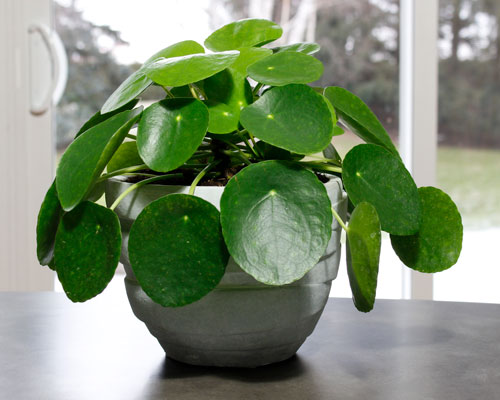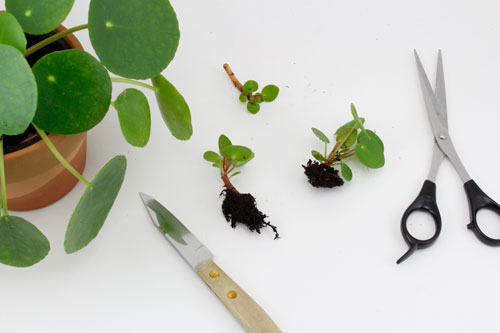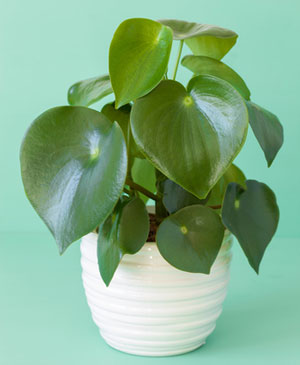3/1/2018
Pilea Popularity
Ellen C. Wells

Pilea peperomioides, otherwise known as the “Sharing Plant” or the “Money Plant,” may just be the hottest houseplant you can’t get your hands on. Why’s it so hard to get more than a few into your garden shop? Although there’s a good supply of it in Europe we’ve been told, it seems Pinterest and other social media outlets have made P. peperomioides a hit with demand far exceeding grower supply. The folks at Harster Greenhouses in Ontario, Canada, for example, are trying to build their stock of the pilea and estimate it will be a couple of years before this plant is readily available everywhere.
Pretty Young Thing
Despite its scarcity, customers are still clamoring for it—and for good reason. It’s a pretty plant! Smooth, nearly round green leaves borne singly on lightly bending stems make this pilea a modern looking (if not Dr. Seuss-looking) plant well-suited for today’s minimalist décor. The Sharing Plant shares its style and hipness equally, whether in a textured or muted pot, displayed against a plain or busy background, shown en masse or on its own. This pilea’s looks and appeal are universal.
Photo credit: Harster Greenhouses.
Know to Grow
Green Profit spoke with Ken Frieling of Glasshouse Works, a Stewart, Ohio, mail order grower and retailer of specimen and conservatory-quality plants. Ken’s been growing and selling P. peperomioides for dozens of years. He indicated it’s not the easiest pilea out there, often the last pilea to obtain for pilea collectors. We asked Ken for the growing information your customers need to be successful with the Sharing Plant. Modify Ken’s advice for your pilea display signage:
• Originally found in the limestone mountains of southern China, P. peperomioides prefers cool conditions, medium light and alkaline soils.
 • It’s not a fan of humid conditions.
• It’s not a fan of humid conditions.
• Keep on the drier side. It cannot tolerate wet soil, preferring porous, sand-free, well-draining soil instead.
• No deep pots for P. peperomioides, as it evolved in small pockets of soil on steep mountainsides.
• It’s somewhat seasonal in its growth, so is a slow grower. Be patient.
• The “sharing” portion of the plant’s common name comes from the small stoloniferous “babies” that are produced from the plant’s base. Break these off and share the plant with others.
The Look Alike

There’s a similar plant—a true Peperomia—that looks a lot like the Sharing Plant, but with more availability and less crankiness. Peperomia polybotrya, or the Owl Eye Plant, has larger leaves that are a bit more cupped-shield shaped, each with a lighter green “eye” where the stem attaches. GP